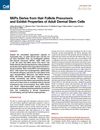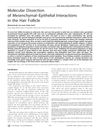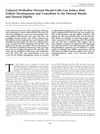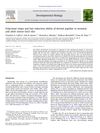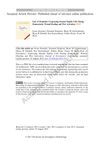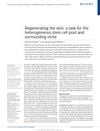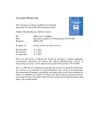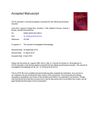Clonal Growth of Dermal Papilla Cells in Hydrogels Reveals Intrinsic Differences Between Sox2-Positive and Sox2-Negative Cells In Vitro and In Vivo
December 2011
in “
Journal of Investigative Dermatology
”
dermal papilla cells Sox2-positive cells Sox2-negative cells hydrogels three-dimensional hydrogel culture system DP markers reconstituted skin hair follicle formation CD133-negative cells DP function high-throughput screens DP proliferation DP maintenance hair follicles DP spheres DP cells 3D hydrogel culture hair follicle growth skin reconstitution hair follicle-inducing ability
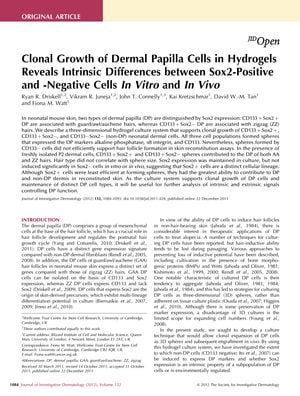
TLDR Sox2-positive dermal papilla cells have unique characteristics and contribute more to skin and hair follicle formation than Sox2-negative cells.
The document describes a study that explored the clonal growth of dermal papilla (DP) cells in hydrogels, highlighting the differences between Sox2-positive and Sox2-negative cells. The research utilized a three-dimensional hydrogel culture system to support the growth of various neonatal mouse dermal cell populations, revealing that Sox2-positive cells are a distinct lineage that maintains expression both in culture and in vivo. The study demonstrated that while all cell types formed spheres expressing DP markers, Sox2-positive cells had a greater ability to contribute to DP and non-DP dermis in reconstituted skin, despite being less efficient at sphere formation. The study also found that Sox2 is not expressed in newly formed DP in adult skin, indicating that Sox2-positive cells are specified during development. The hydrogel culture system was shown to preserve the DP phenotype and support hair follicle formation when combined with freshly isolated dermal cells in skin reconstitution assays on nude mice. However, the system did not enhance the hair follicle-inducing ability of CD133-negative cells. The study concluded that the hydrogel culture system could be useful for further analysis of DP function and for high-throughput screens of agents that regulate DP proliferation and maintenance, with the potential to induce hair follicles from DP spheres. The number of grafts analyzed was 3 for each specified group.


